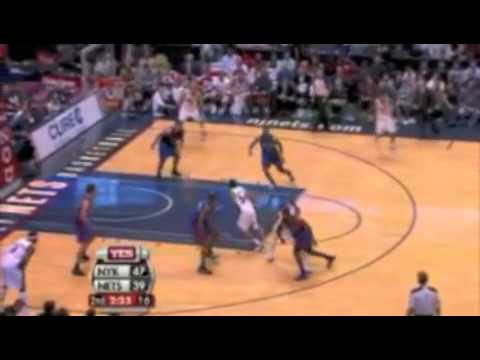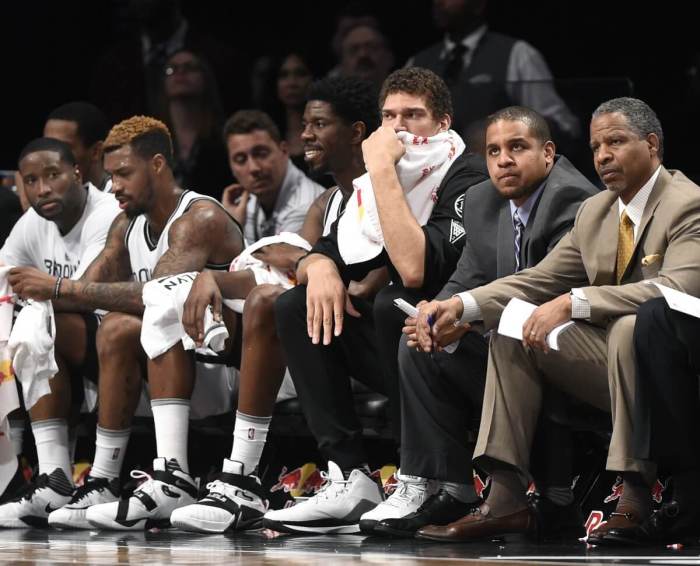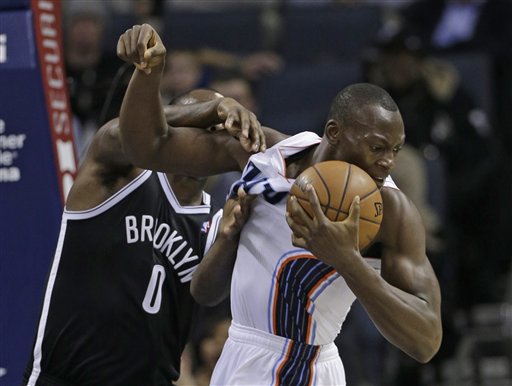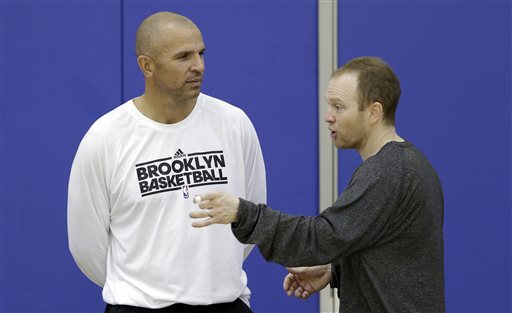 When a team is struggling, it’s very easy for fans to clamor for that one guy off the bench who’s not getting a lot of playing time. In the case of Sean Williams and the Nets, Williams absolutely needs to be playing more, because there are a number of statistical indicators that show the Nets are a better team this season when SWat is on the court.
When a team is struggling, it’s very easy for fans to clamor for that one guy off the bench who’s not getting a lot of playing time. In the case of Sean Williams and the Nets, Williams absolutely needs to be playing more, because there are a number of statistical indicators that show the Nets are a better team this season when SWat is on the court.
For the first few weeks of the season (let’s say, until about the 0-8 mark for the Nets), Williams spent a majority of the team’s games racking up “DNP – Coach’s Decision.” While the Nets were suiting up eight healthy bodies for many of those games, it was somewhat understandable why coach Lawrence Frank hesitated to Call Williams’ number. There’s no doubt that Williams has a number of athletic gifts, but in his first two seasons, he’s really never been able to put things together on the court. After an okayish rookie season, where he put up a PER (Player Efficiency Rating) of 13.84, a shade below league average, Williams had a disaster of a sophomore campaign, shooting 42 percent from the field, scoring 8.7 points per 40 minutes, turning the ball over on 16.2 percent of his possessions, fouling once every five minutes, and sporting a PER of 8.84. Williams second-season also featured such behavioral issues as getting thrown out of a D-League game and getting arrested in March after allegedly throwing a computer monitor at a store clerk in Denver.
But if there was ever a case of “that was then, this is now,” the early stages of Sean Williams’ 2009-10 campaign is it. While he’s only played in about 18 percent of his team’s total minutes, he’s leading the Nets in simple rating, a metric used on 82games that takes into account a player’s +/- along with a team’s production when a certain player is on the court versus when that player is off the court.
With Williams, the Nets are +6.2 when he’s on the court and -14.0 when he’s off the court, good for a net gain of +20.1. There are currently two five-man floor units that are sporting a positive +/- according to 82games, and both of them feature Sean Williams. Most notably, a rotation of Chris Douglas-Roberts-Terrence Williams-Trenton Hassell- Bobby Simmons and Sean Williams is sporting a +15 in the 17.2 minutes they’ve played together this season. The group has an offensive efficiency of 110, a defensive efficiency of 60 and a win percentage of 100. A second rotation of Rafer Alston- CDR- Hassell- Sean Williams and Brook Lopez has a +1 in 18.6 minutes, with an offensive efficiency of 117, a defensive efficiency of 119 and a win percentage of 100.
So how is Sean Williams helping the Nets? When you look at traditional statistics, they really don’t lead you to that conclusion. His per 40 minute averages of 12 points and 9.6 rebounds are decent, but not overwhelming. He’s actually turning the ball over more than he did the year before, and his fouling is still a big problem, as evidenced by his game on Saturday against the Knicks, where he fouled out in 16 minutes. His steals are up (.6 a game), but his blocks are down (.8), and his shooting percentage is still sub-50 percent at 48 percent.
So, let’s turn to some advanced statistics for some answers. According to 82games, when Williams suits up at power forward for the Nets, which he’s done for 7 percent of the team’s minutes this year, the team has an offensive efficiency of 88.2 and a defensive efficiency of 83.7. When he plays center the other 10 percent of his team’s minutes, the Nets’ offensive efficiency goes down to 80.6, but their defensive efficiency is an especially stingy 73.4. Overall, Nets offensive efficiency for the season is 89.9 and their defensive efficiency is 101.8, so while Williams is not much of a help offensively, he makes the team’s defense considerably better at both power positions.
As for where to play Sean Williams – while Lawrence Frank has been quite insistent about using Swat more at center, he’s emerging as a dominant force in his limited minutes at PF this season. His per-48 minute averages as a PF this year are 25.6 points, 1.2 blocks, 2.3 turnovers, 11.6 rebounds, 69 percent effective FG percentage and a PER of 26.6, the highest PER for any Net that has played the PF this season. Meanwhile, opposing PFs while Williams is on the floor are averaging 12.8 points, 12.8 rebounds, 3.5 assists, an effective FG percentage of 17, and a PER of 5.4. These numbers, combined with the fact that the rotation where Brook is playing C and Sean Williams is at the four is putting up a +1 means Frank needs to experiment with Williams getting more minutes at PF, relegating Josh Boone to the bench.
Then there are the little things Sean Williams is currently doing, that aren’t measured statistically, but still help make his teammates better. One area where Sean Williams has been a force this season is in setting up his teammates with some great picks and screens. Because of his strength, his athletic ability, and his long, lanky frame, Williams has emerged as a great playmaker without the ball. Let’s look at some video clips for illustration.
Against the Knicks on Saturday, many had declared that Devin Harris was “back” after he split his defenders and dunked the ball home. But look at Sean Williams setting just a terrific backpick on Chris Duhon. Would Harris have been able to explode like that without a clear path set up smartly by Sean Williams?
While it’s a bit harder to see in this second video because of the camera angle, Chris Douglas Roberts got a clear path to the rim against Miami last week because of another fantastic backpick by Sean Williams.
Finally, in that same Miami game, and the Nets desperately trying to hold on, Rafer Alston got a wide-open look at a three (which he actually hit for a surprise). But look at how Williams sprinted out from the baseline to screen Alston’s defender, Carlos Arroyo, completely out of the play.
Obviously, Williams’ good play recently has forced Frank to play him more than he did at the beginning of the season, and Swat isn’t doing himself any favors when he fouls out in 16 minutes like he did against the Knicks. Still, there is a good amount of statistical evidence mounting that proves that the Nets are a better team with Sean Williams. As more healthy bodies start returning, especially those like Devin Harris and Courtney Lee who are better offensively than the current Nets rotation, Williams needs to have a more featured role as a defensive stopper at the PF spot, where he can help set up his teammates with his play without the ball. Playing him for 15-16 minutes a game every other week just isn’t going to cut it anymore. It’s time to just let Sean Williams play.



















